What I really love about ferns is that tropical, almost prehistoric character they can add to a space.
Beautiful leafy, green plants, Boston ferns are ideal for people who might not be the most green fingered as they’re incredibly hardy.
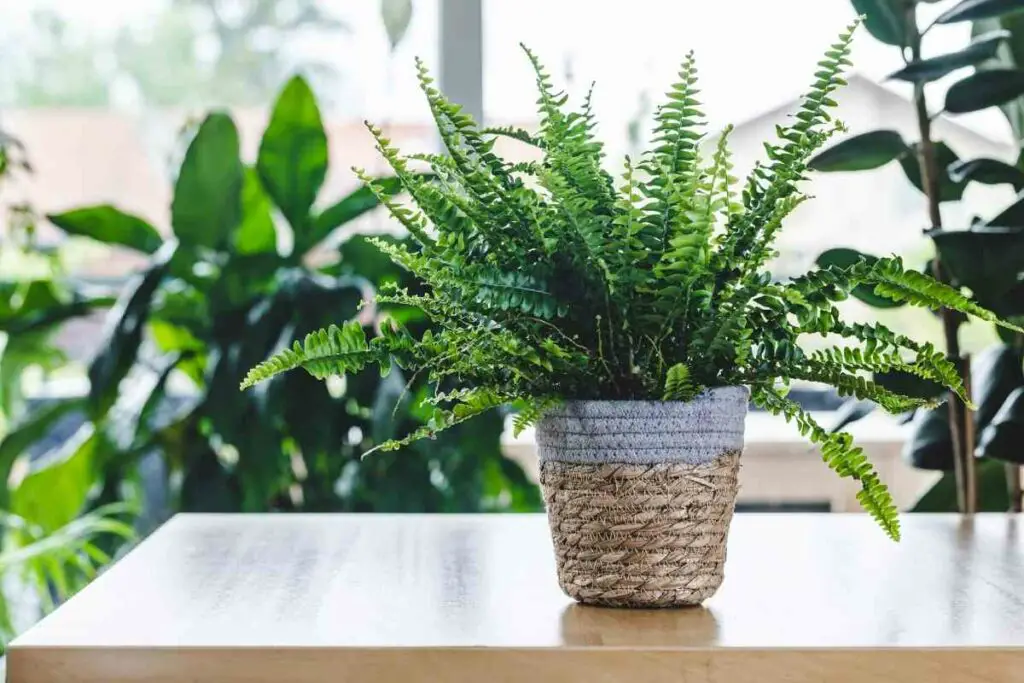
Even when they look as though they’re about to give up the ghost, they’ll surprise you by seemingly coming back to life; given the right care, that is.
In This Guide – I’ll be covering everything you need to know about growing Boston ferns. So, even if you’re a complete beginner, you’ll soon be confidently taking care of your plants.
Table of Contents
An Introduction To The Boston Fern
The scientific name for the Boston fern is nephrolepis exaltata and this is a plant that has long, beautiful green fronds that arch from the center of the plant.
It is well loved as a house plant but it can also be grown in the garden if the conditions are right.
One of the things that a lot of people love about the Boston fern is that it’s one of the best air purifying plants.
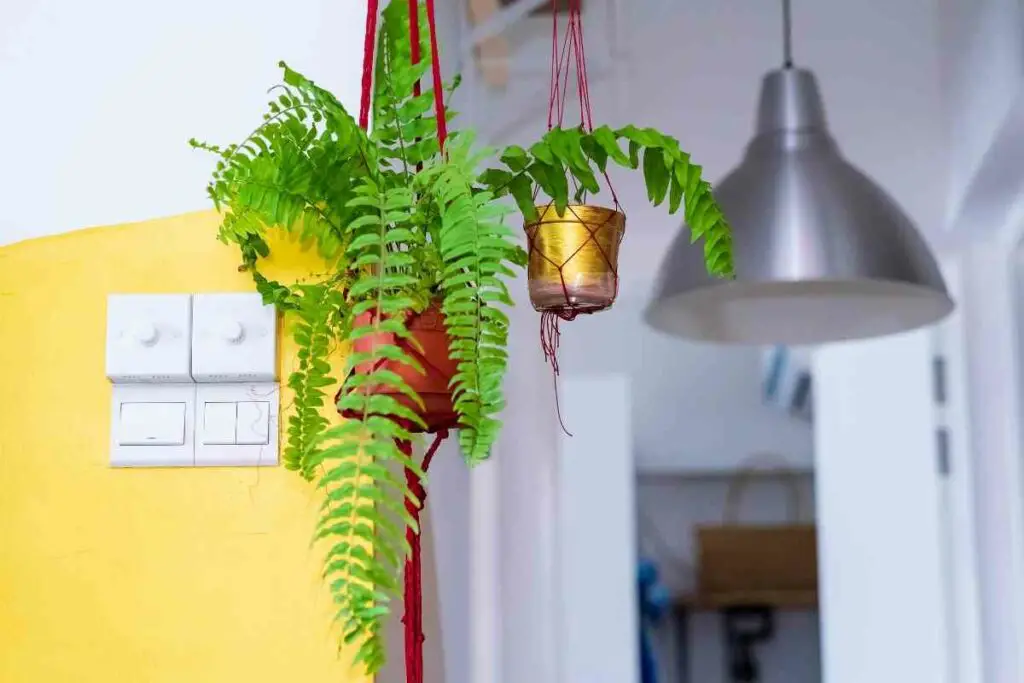
So good in fact, that it’s even recommended by NASA.
The plant gets its name from the way that it was introduced to North America.
Back in the late 1800s, there was a shipment of ferns that came from Philadelphia to Boston.
While the rest were of a specific type, there was one that was notably smaller than the others and it was our beloved Boston fern.
The Boston fern is sometimes called the sword fern and it is native to South America where you’ll find it growing in rainforests and swampy areas.
This tells us a lot about the conditions that this plant likes so gives us a few clues on how best to take care of it.
While they can be difficult to grow, they’re hardy and, once you provide the right conditions, they will thrive.
How Big Are Boston Ferns?
One of the things you need to think about when growing a Boston fern is how big the plant is.
Many people put their Boston ferns into a hanging basket as the dangling fronds make it look as though the plant is floating.
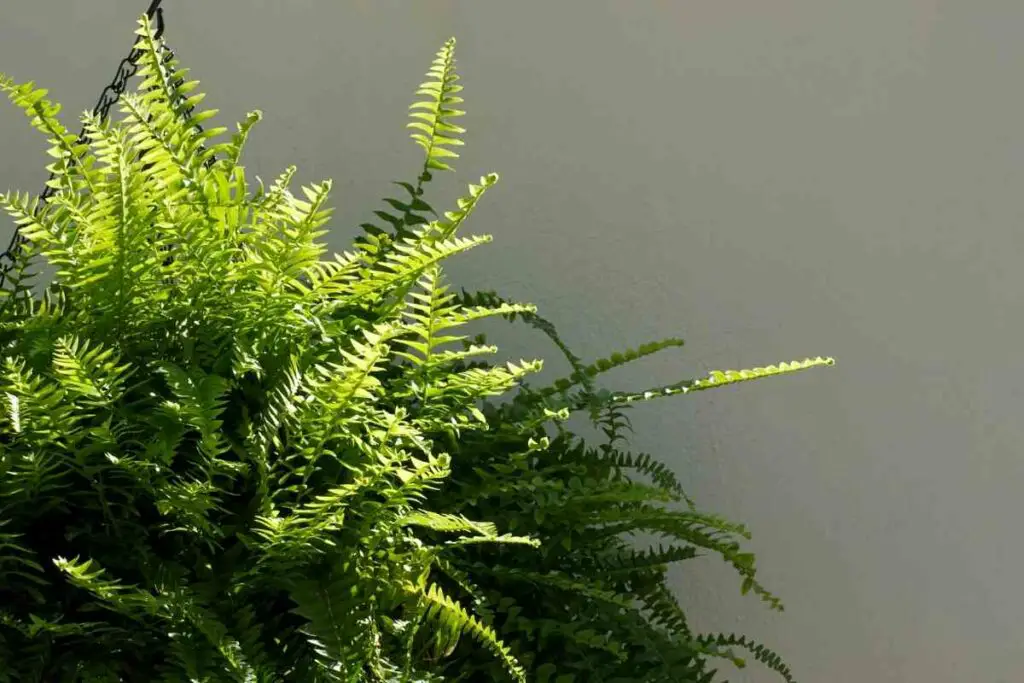
However, do be mindful that the fronds can get quite lengthy and heavy so this needs to be taken into account when choosing a hanging basket; make sure it can take the weight.
That said, it’s more than possible to grow a Boston fern in a container and they make a lovely addition to a patio.
Indoors, the plants are a great way of bringing the outside in and are often placed on a table or pedestal.
When growing Boston ferns in the house, they’ll not normally get so big that they take over the space.
A lot of people have success growing them in the bathroom because of the humidity in the air.
Caring For Your Boston Fern
While Boston ferns are a relatively hardy species, just like anything else, they’re going to need the right care if they’re going to survive.
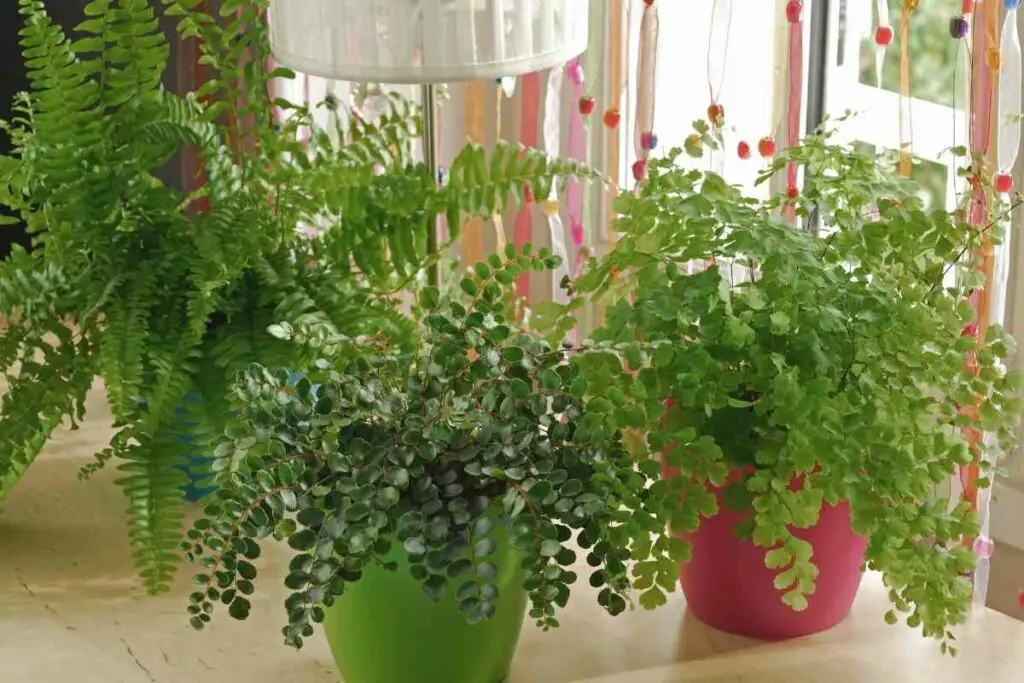
Here are some easy care tips to get the most out of this delightful plant.
Light
In their natural habitat, Boston ferns don’t receive a lot of light.
If you are choosing a spot in the garden then it’s essential that the plant does not sit in direct sunlight.
If it does, then there’s a very high chance that the fronds will become burned.
A shady spot will be best for your plant or somewhere that it can receive a small amount of indirect sunlight.
Water And Humidity
During the growing season, you will need to pay close attention to your Boston fern in terms of how often you water it.
These plants benefit from being watered at least once, if not twice a week. Of course, how frequently you do this will depend on the local climate.
It is, however, incredibly important to avoid overwatering your Boston fern which is easily done and can cause root rot.

Check the soil regularly to see how moist it is and if you notice that it has started to dry out, add a little more water. Make sure that you only use lukewarm water.
Sometimes, you may notice that your Boston fern looks yellow and this is a sign that you need to start watering it more frequently.
However, during the winter, the fern will be largely dormant so it is not necessary to water it.
Note that Boston ferns, much like other types of ferns, grow naturally in very humid environments.
They’re found under canopies so you’ll need to create the same kind of environment for your plant if you want it to do well.
This means creating as much humidity as possible.
It is easy to create a microclimate for your Boston fern. You’ll do this using a drip tray along with some small stones or pebbles. We have a more detailed guide on that here.
Heads Up! It is important to make sure that the water level doesn’t reach the bottom of the tray. When it starts to get lower, you must top it up otherwise there will be a risk of root rot.
When the water remains at the correct level, it will evaporate, creating additional humidity around the fern.
Soil
The soil you use for your Boston fern should be nice and light, airy, and loamy.
These plants, while they do like to remain in moist soil, need a soil that is well draining.
It’s a good idea to add things to your regular potting soil if you want to provide the best conditions for your fern.
Things like perlite and peat moss are particularly effective and will do very well at improving the air flow around the roots.
Temperature
If you are keeping your Boston fern indoors then you will need to make sure that the temperature remains consistent between 60 and 75 degrees.
It is possible to keep the plant outdoors but if the local climate falls below 55 degrees then it’s essential that you bring the plant inside for winter.
When growing Boston ferns in the house, try to choose a location that has no drafts such as near a door or an air vent.
If the plant is exposed to too many fluctuations in temperature, this will affect its health.
Fertilizer
The best way to feed your Boston fern is to use an all purpose fertilizer. I’d recommend going for a liquid product but make sure that you use it at half strength.
You will need to fertilize the plants around every two weeks from April all the way through until fall sets in.
Make sure that you only fertilize the plant once it has been repotted into its permanent home.
If you have grown the plant from seed then it’s important that the fern has time to establish by itself.
Will Boston Ferns Do Well In Winter?
In some parts of the USA, the climate will be too cold to keep the Boston fern outdoors over winter.
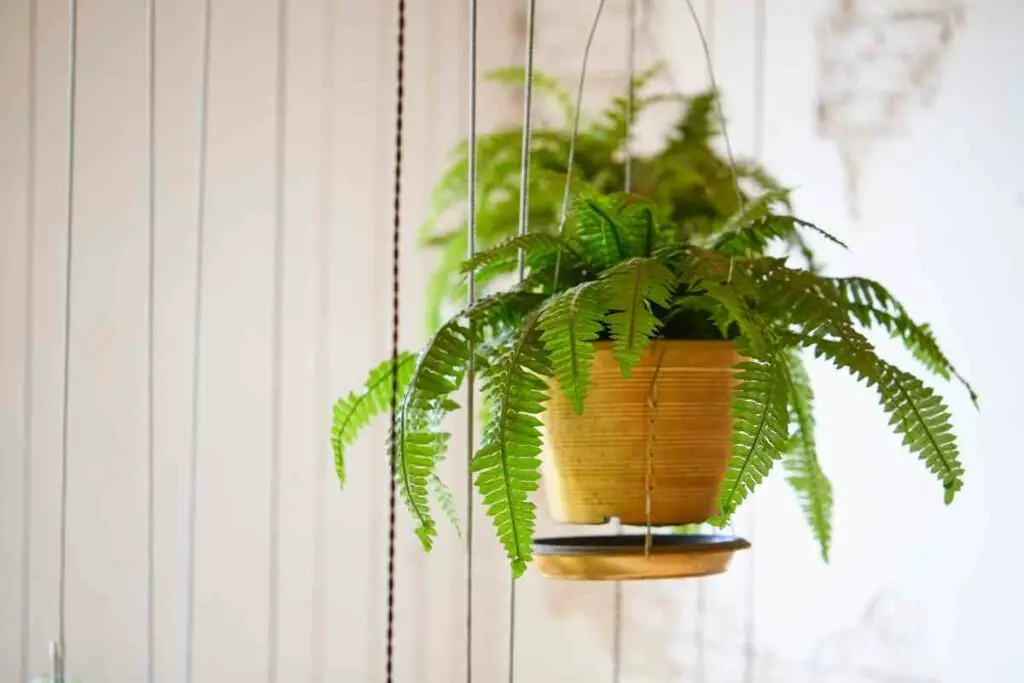
This is especially true if there will be a frost as this will almost certainly kill your plant.
For This Reason – It is essential to bring it inside and maintain the consistent temperatures that were mentioned earlier in this guide.
However, in areas where there is a moderate climate over the winter, it should be OK to leave the fern outdoors.
In this case, it will enter into a state of dormancy and will start growing again once spring rolls around.
Are There Are Pests And Diseases I Should Be Aware Of?
One of the biggest issues for Boston ferns is that those grown outdoors are a real attractant to a variety of bugs.
These include things like:
- mealybugs
- whiteflies
- snails
- caterpillars
- slugs
- and plenty of others
You’ll usually find the whiteflies under the leaves as they sit here to feed on the juices that the fern produces.
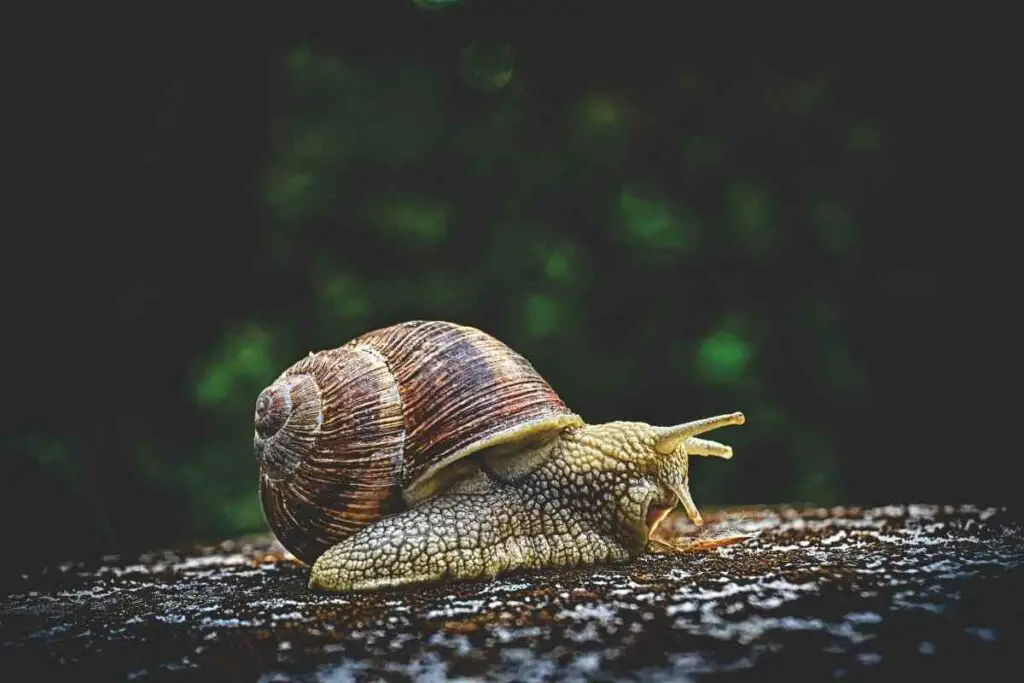
The issue is that, when they are done feeding, they leave a type of mold behind which is bad for the health of your plant.
The same issues come from a mealybug infestation whereas things like slugs and snails will eat holes in the plant.
You can control whiteflies by giving them a blast of water with your hose which should remove most of the population.
However, this cannot usually be done in one session so you’ll need to repeat the treatment over a few days.
If you have problems with chewing creatures then it’s unfortunately a case of picking them off by hand.
Once you have the infestation under control, try using a surface like gravel around the base of the fern as this is uncomfortable for molluscs to move over and will likely deter them.
As well as this, you may find that your Boston fern suffers from a fungal disease known as blight.
When this happens, the fern will become covered in mycelium.
The good news is that the condition is not difficult to deal with and usually a simple repotting will fix the problem. However, you must make sure that you use a sterile container.
There aren’t too many other problems associated with the Boston fern.
As I discussed earlier, it is susceptible to root rot if it is over watered and the telltale sign of this will be that the fronds become discolored.
Don’t Worry! The best way to stop this problem in its tracks is to repot the fern and make sure that the soil is well draining.
Conclusion
The Boston fern is a beautiful plant that adds a pop of green to any indoor area.
But it’s versatile enough to be grown outdoors should the climate allow.
These plants are hardy and will survive a degree of mistreatment often coming back to life when they seem to be on the very edge.
However, they do require proper care which is why it’s important to follow the tips in this guide for a healthy, thriving plant.
- How to Dry Basil Leaves: A Professional Guide
- Is an Avocado a Fruit or Vegetable? Simple Answer and Explanation
- Does Pineapple Have Seeds? Exploring the Anatomy of Pineapples
- Blooming Through Winter: Can I Grow Vegetables Indoors in the Winter?
- What Can You Grow in a Greenhouse All Year Round: A Guide to Year-Round Greenhouse Gardening
- Are Blueberries Blue? Debunking the Myth of Their Color



















